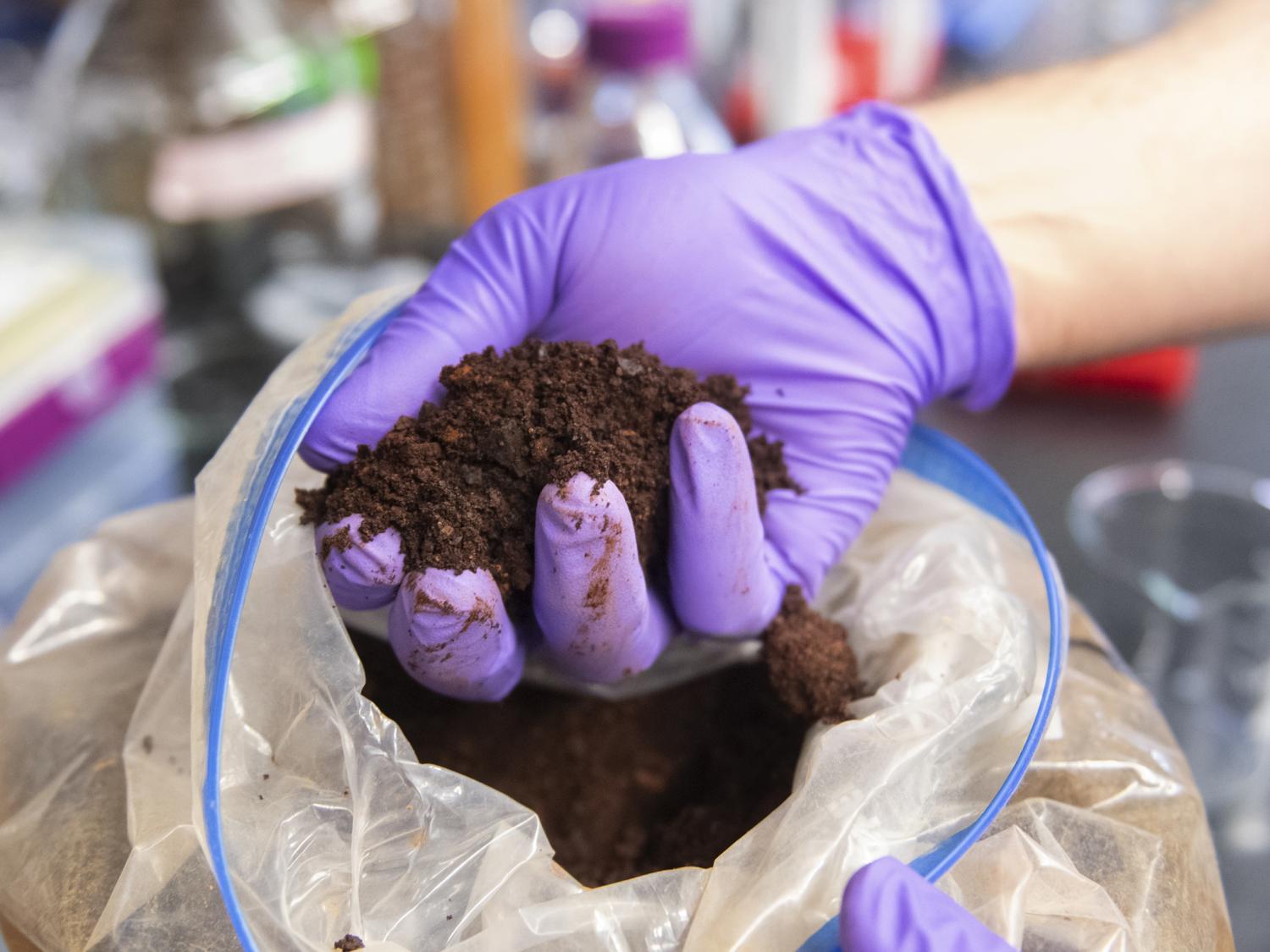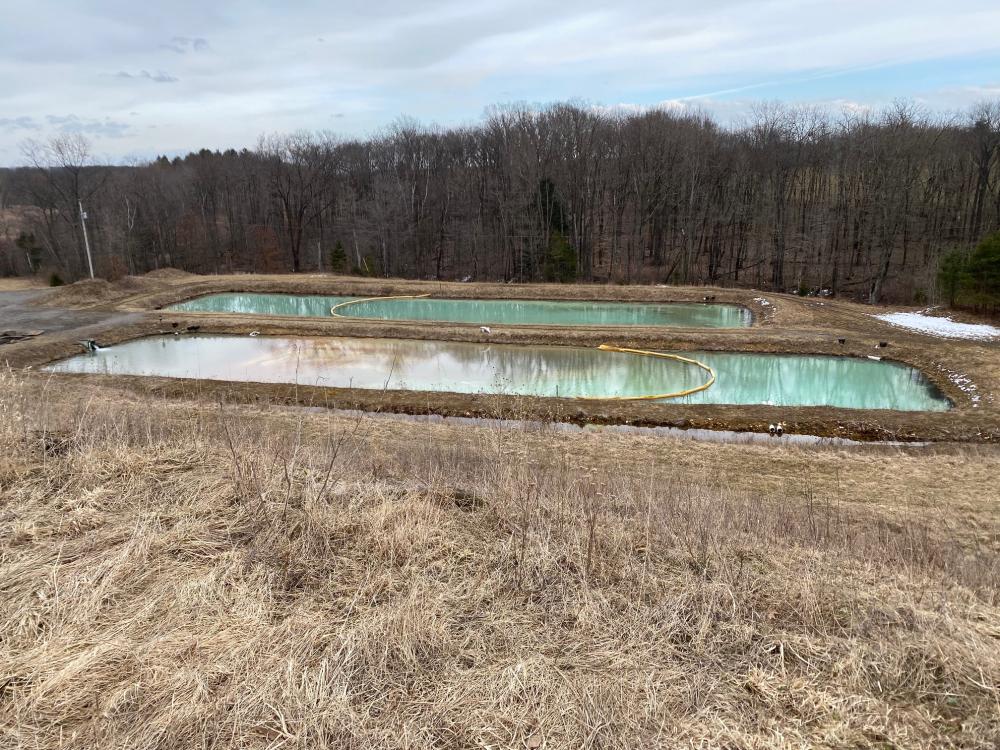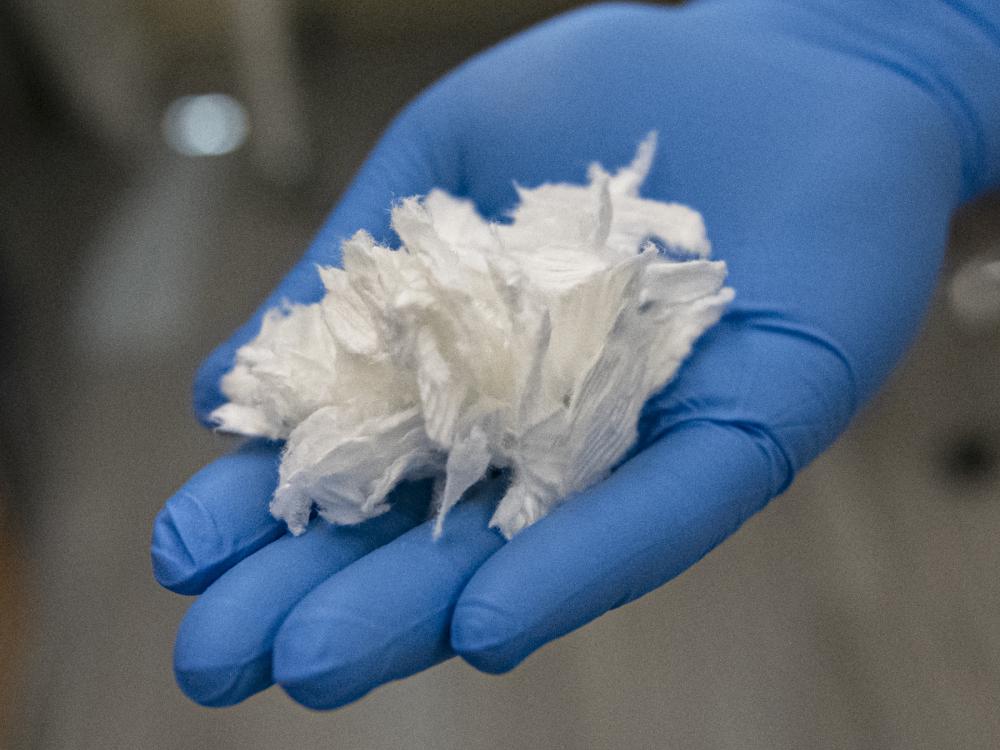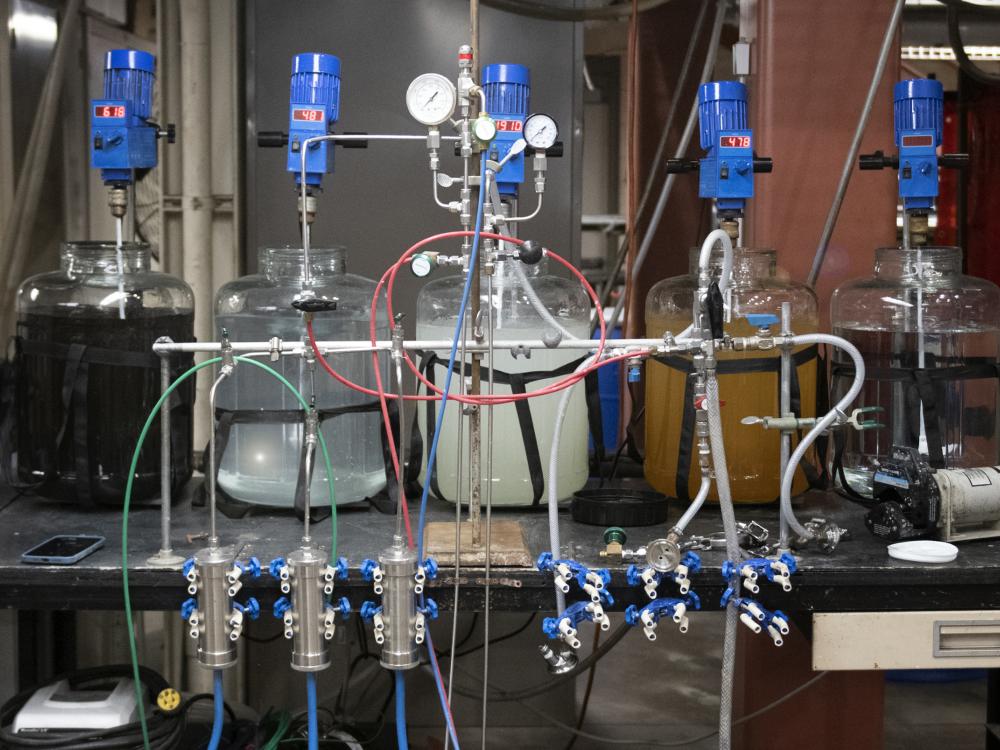Mission critical: To get critical minerals and rare earth metals from coal waste
Pennsylvania’s mine waste could play an important role in the nation’s green-energy future.
By David Pacchioli
Critical minerals, including rare earth metals, are vital components of our consumer goods, national defense, and emerging green-energy technologies, but the U.S is heavily dependent on imports for an adequate supply. Penn State researchers are looking for ways to tap Pennsylvania's coal mine waste as a domestic source for these materials and reduce environmental pollution at the same time.
Think of any technology that’s part of a clean-energy economy: electric vehicles, wind turbines, solar panels. Think of the devices we depend on for work and play: smart phones, computer hard drives, flat screen monitors, rechargeable batteries. Or the systems that undergird our national defense: lasers and missile guidance, radar and sonar.
All of these depend on critical minerals.
The U.S. Geological Survey (USGS) currently designates 50 minerals as critical to the U.S. economy or its national security or both. That number includes the so-called rare-earth elements — the 15 lanthanide metals at the bottom of the periodic table plus scandium and yttrium — along with the battery metals lithium, cobalt, nickel, and manganese, as well as platinum, aluminum, and graphite, among others.
With the accelerating shift toward renewable energy, need for these materials is rising sharply. By 2030, according to Bloomberg, demand for nickel and aluminum will increase 14-fold, with graphite and lithium not far behind.
“The problem is we are highly dependent on other countries for both production and processing,” said Sarma Pisupati, professor of energy and mineral engineering and director of the Center for Critical Minerals at Penn State. According to USGS, the U.S. imported almost all the rare earth elements it used in 2018, with 80% coming from China. Department of Energy figures show over 50% import reliance for the remaining critical minerals, and 100% reliance for 14 of them.
This dependence was a serious concern even before the COVID pandemic revealed major gaps in U.S. supply chains, and mineral-rich Russia’s invasion of Ukraine has only exacerbated the problem. The federal government has responded with executive orders directing increased efforts to find and develop domestic sources, but new mining poses steep environmental and political costs, and primary deposits of many of these minerals are limited in the U.S.
“There is a need for secondary resources,” said Pisupati. Fortunately, he added, “Pennsylvania is rich in these resources.” Pennsylvania’s legacy as a coal-mining state, he said, could be to turn a problem into an important part of the solution.

Decades of industrial mining have left behind literal mountains of waste across the Commonwealth, Pisupati explained. Mine tailings, sludge ponds and acid mine drainage are an ongoing environmental concern. But locked inside those waste streams are significant quantities of rare earth elements and other critical minerals, he said. All we have to do is figure out how to safely and economically extract them.
“We already have to treat this stuff before releasing it into the environment,” Pisupati said. “By modifying existing treatment processes, we can address multiple problems: getting the material we need for national security and remediating long-standing environmental problems at the same time. If we do it right, we can create jobs and an economic boost for the communities coal has left behind.”
Penn State researchers identified rare earth elements in coal 70 years ago
Penn State’s involvement in the state’s coal-mining industry traces back to the 19th century. The University established a mining engineering degree program in 1890, training graduates in mine mechanization and safety. Its programs in mining geology, mineral processing, and extractive metallurgy have long been recognized among the best in the world.
“By modifying existing treatment processes, we can address multiple problems: getting the material we need for national security and remediating long-standing environmental problems at the same time.”
Sarma Pisupati, director, Center for Critical Minerals at Penn State
University experts were early to recognize the untapped potential in coal byproducts. In 1952, Edward Steidle, dean of what was then the College of Mineral Industries, wrote, “By the year 2000 we will not be wasting our coal ash, in which geochemists have shown there is a notable concentration of rare elements, such as germanium and rare earths. We will be recovering these elements.”
Today, Penn State’s research and teaching capabilities span the entire supply chain for critical minerals, from resource exploration and evaluation to raw material processing to extraction and refining of metals to the manufacturing of end products like lithium-ion batteries, magnets, and advanced carbon fibers. “No other university has that breadth,” said Pisupati.
The Center for Critical Materials that he directs was formed by the College of Earth and Mineral Sciences in 2019 to take full advantage of this expertise. Its research core now includes over 25 faculty from departments across Penn State, including geosciences, energy and mineral engineering, materials science and engineering, chemistry, chemical engineering and energy business and finance. A memorandum of understanding signed in 2020 with the Colorado School of Mines further expands that reach.
Last year Penn State was tapped by the U.S. Department of Energy to lead a regional consortium to assess and catalog critical mineral resources in Pennsylvania and surrounding states, to develop strategies to recover these materials, and to identify potential gaps in the supply chain. The Consortium to Assess Northern Appalachian Resource Yield, or CANARY, is part of a national effort to ramp up domestic production.

“Critical mineral recovery from coal waste and its associated environmental remediation present a tremendous opportunity for the college, university, Commonwealth and nation,” says Lee Kump, dean of the College of Earth and Mineral Sciences. “Our research will guide the development of advanced green technologies that will ensure that this new industry will be a boon for the Appalachian economy and environment and create a domestic supply chain of minerals needed for energy transition to renewables, high-tech manufacturing, and national security.”
Locating rare earth minerals in abandoned mines
Much like other critical minerals, “Rare earths aren’t exactly rare,” said Barb Arnold, professor of practice in mining engineering and CANARY’s managing director. “But they’re rarely found in high concentrations, so mining for them often isn’t economically viable.”
In places like Pennsylvania, over the millions of years of coal’s formation, cations of various metals attached themselves to organic peat. “Some of the heavy stuff seems to have settled down into clays that were underlying the peat bogs,” Arnold said. “That’s why we have all these elements present in coals.”
Over decades of mining, these minerals were routinely tossed aside with the rest of the detritus. Now, however, coal’s waste streams hold enough potential value to be worth exploring. Acid mine drainage, the acidic runoff from abandoned mine lands, impacts over 5,500 miles of the state’s waterways. This literal waste stream, along with the acidic sludge held in treatment ponds, the vast piles of coal refuse, and the fly ash associated with coal-fired power plants, is a potential source of critical minerals.


The first step is assessing what’s out there. Arnold and the rest of the CANARY team, including Pete Rozelle, a doctoral alum and former project manager for the DOE who is now an adviser for the College of EMS, have begun the task of evaluating concentrations of cobalt, lithium, manganese, nickel, and rare earths likely to be present around the state. That means digging into the history of mining, scouring century-old government records and other publicly accessible databases as well as University archives. “We have a head start,” Rozelle said, “because Penn State was a leader in the U.S. in inventorying mine refuse in the 1960s.”
Coal mines are not the only object of interest. Mining for metals, including chromium, zinc, iron, and nickel, has been ongoing in Pennsylvania for 200 years, up until the 1980s. Waste dumps left behind by the metallurgical and metal-processing industries are another potential source of critical minerals.
Analyzing historical data brings special challenges, Arnold said. Assays relied on back in the day may not yield accurate results by today’s standards. “The USGS has qualified some of the numbers in its historical data,” she said. “In some cases, we have to go back and do our own assessment.”
Still, early results have been encouraging. In November 2021 the team released a preliminary estimate of the amounts of cobalt and manganese present in mine dumps and acid mine treatment ponds around the state. Both metals are essential ingredients in the lithium-ion batteries that power electric vehicles, and for both, the U.S. is highly dependent on imports from countries including the Democratic Republic of the Congo and China.
Pennsylvania once led the nation in cobalt production, Rozelle noted. “It was a byproduct of the steel industry.” So it was no surprise to find that there is as much of the stuff locked up in the state’s mine waste — some 52,000 metric tons — as exists in the entirety of U.S. primary reserves.
The same report estimates over half a million metric tons of manganese, with additional amounts of both metals leaking into waterways via acid mine drainage every year. Recovery and sale of these materials, Pisupati said, could not only provide a domestic source for the battery industry, but could help offset the costs of reclaiming abandoned mine lands and restoring polluted streams.
Recovering critical and rare earth elements from mine waste and e-waste
Accessing these dormant resources, however, will require bold advances in mineral processing — finding ways to make extraction and separation of the desired materials both environmentally friendly and economically feasible. It’s a tall order, which is why Pisupati and his colleagues are exploring every possible avenue.
Read more on Penn State News
